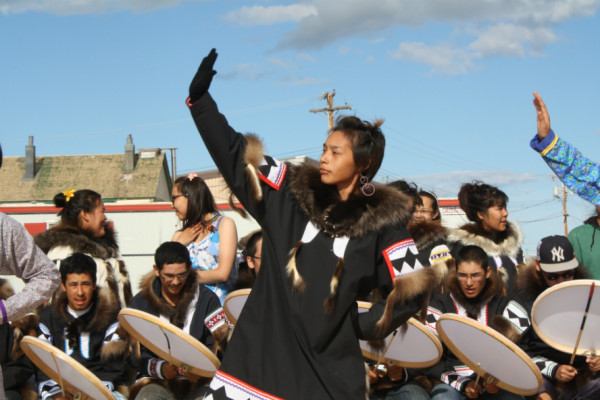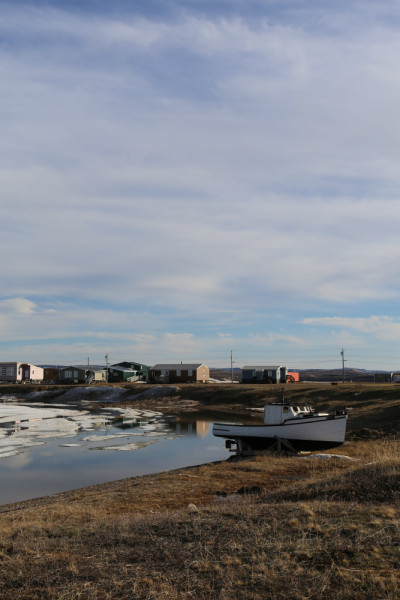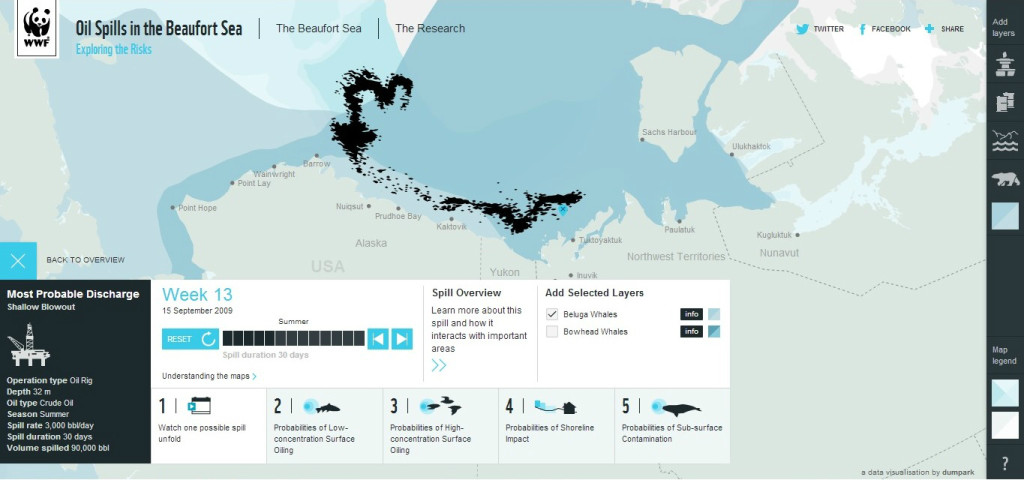Beaufort Sea Community Tour: Talking with conservation leaders in Paulatuk
WWF goes on the road to share the results of our oil spill modelling with those who would be most affected by a spill: the communities of the Beaufort Sea.
Paulatuk is a community of over 300 people at the base of Darnley Bay in the Northwest Territories. Its Inuvialuit name, Paulatuuq, or “place of coal”, refers to the natural geological formations west of the community that continual smolder throughout the year.

It is a region of immense ecological importance and raw beauty, and one of my favourite communities to visit and travel around. As you may read from my previous blogs, I was here in the two previous summers, first to assist in a traditional knowledge study on beluga, fish, and climate change, and more recently, to assist the community in coordinating the first ever Clean Camps, Clean Coast initiative in the region. We have also supported the Hunters and Trappers Committee in a larger project to monitor the health of belugas in the region.


The community has shown tremendous leadership in conservation and stewardship of their lands and waters. In 1996, the community worked with Parks Canada to establish Tuktut Nogait National Park, one of Canada’s largest national parks and an important calving ground for caribou, located just to the east of the community.
The community is currently working with the Department of Fisheries and Oceans to establish the newest Marine Protected Area in Northern Canada. The Anuniaqvia Niqiqyuam Area of Interest in Darnley Bay “is a highly productive region, supporting a variety of Arctic species year-round”, and would be Canada’s first MPA to have conservation objectives based on traditional knowledge and values.

As our cutting edge research modelling oil spills in the region illustrates, the predominant trajectory trends to the west, which would often carry oil away from Paulatuk. However, in up to 25% of simulations, a spill from a blowout at a shallow water well would travel east into the Amundsen Gulf, where Paulatuk is located, and could present serious risks to the community. This image below illustrates these results, and I encourage you to explore these risks for yourself at arcticspills.wwfcastg.wwf.ca.

Under certain environmental conditions, an oil spill from either shipping or oil and gas exploration could damage the nearby protected areas – ecologically rich places valuable to both wildlife and local residents, an essential part of Canada’s National identity, and the real treasures of the Arctic! It could contaminate the shoreline of Important Bird Areas where a range of bird species seek refuge during the summer. Furthermore, these regions are extremely remote, with challenging environmental conditions and sensitive habitats, which would make any cleanups particularly challenging.

Given the great importance of the ocean and coasts to current and future generations of Inuvialuit, the potential risk of an oil spill –minor or major – must be understood and mitigated to ensure that development in the region does not sacrifice the traditional livelihoods, sustenance, and culture of Northern communities.
